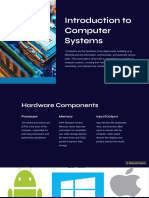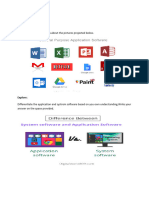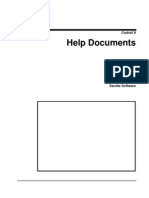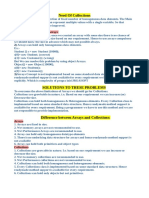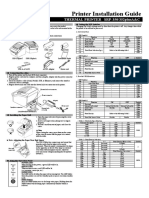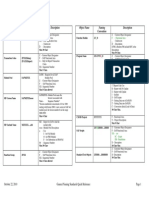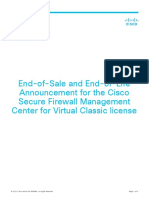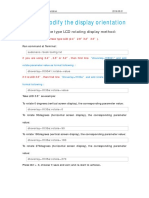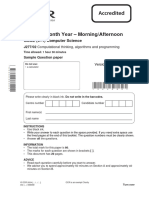0% found this document useful (0 votes)
8 views13 pagesIntroduction To Computer Systems
A computer system integrates hardware and software components, including the CPU, memory, and storage, to process data and perform tasks. It consists of input/output devices, system software, application software, and utility software, each serving distinct functions. The document also outlines the evolution of computers through five generations, highlighting key advancements in technology.
Uploaded by
mananya2301Copyright
© © All Rights Reserved
We take content rights seriously. If you suspect this is your content, claim it here.
Available Formats
Download as PDF, TXT or read online on Scribd
0% found this document useful (0 votes)
8 views13 pagesIntroduction To Computer Systems
A computer system integrates hardware and software components, including the CPU, memory, and storage, to process data and perform tasks. It consists of input/output devices, system software, application software, and utility software, each serving distinct functions. The document also outlines the evolution of computers through five generations, highlighting key advancements in technology.
Uploaded by
mananya2301Copyright
© © All Rights Reserved
We take content rights seriously. If you suspect this is your content, claim it here.
Available Formats
Download as PDF, TXT or read online on Scribd
/ 13
